Nancy L Burns
age ~64
from Austin, TX
- Also known as:
-
- Nancy L Urns
- Nancy Lburns
Nancy Burns Phones & Addresses
- Austin, TX
- Pflugerville, TX
- Round Rock, TX
- 7817 Blackshear Dr, Dayton, OH 45424 • (937)2332904
- Huber Heights, OH
- Georgetown, TX
- Columbus, OH
- Morrow, GA
- Vandalia, OH
- Fresno, CA
Isbn (Books And Publications)

The Formation of American Local Governments: Private Values in Public Institutions
view sourceAuthor
Nancy Burns
ISBN #
0195082753

The Formation of American Local Governments: Private Values in Public Institutions
view sourceAuthor
Nancy Burns
ISBN #
0195090934

The Private Roots of Public Action: Gender, Equality, and Political Participation
view sourceAuthor
Nancy Burns
ISBN #
0674006011

The Private Roots of Public Action: Gender, Equality, and Political Participation
view sourceAuthor
Nancy Burns
ISBN #
0674006607



The Practice Of Nursing Research: Conduct, Critique, And Utilization
view sourceAuthor
Nancy Burns
ISBN #
0721606261

The Practice of Nursing Research: Conduct, Critique, and Utilization
view sourceAuthor
Nancy Burns
ISBN #
0721610951
License Records
Nancy Hackney Burns
License #:
7998 - Expired
Category:
Nursing
Issued Date:
May 1, 1978
Effective Date:
Jan 1, 1994
Expiration Date:
Oct 31, 1993
Type:
Licensed Practical Nurse
Name / Title
Company / Classification
Phones & Addresses
Director , Vice Chair
AUSTIN DMO, INC
Membership Organizations, Nec, Nsk
Membership Organizations, Nec, Nsk
211 E 7 St STE 818, Austin, TX 78701
Director , Austin President
TEXAS BUILDING OWNERS AND MANAGERS ASSOCIATION, IN
Membership Organization
Membership Organization
PO Box 27473, Austin, TX 78755
Director , Austin President
Texas Building Owners and Managers Association, Inc
Membership Organization
Membership Organization
PO Box 27473, Austin, TX 78755
Director
SUSTAINABLE FOOD CENTER, INC
Social Services
Social Services
2921 E 17 St #C, Austin, TX 78702
1106 Clayton Ln STE 480W, Austin, TX 78723
(512)2360074, (512)5381610
1106 Clayton Ln STE 480W, Austin, TX 78723
(512)2360074, (512)5381610
Director
AUSTIN CITY BRASS ENSEMBLE
13401 Metric Blvd APT 617, Austin, TX 78727
10610 Morado Cir, Austin, TX 78759
710 Colorado St #2B, Austin, TX 78701
10610 Morado Cir, Austin, TX 78759
710 Colorado St #2B, Austin, TX 78701
Director
VISION AUSTIN FOUNDATION
401 Congress Ave STE 2200, Austin, TX 78701
Manager
Brown Building Condo Sales
Real Estate Agent/Manager
Real Estate Agent/Manager
114 W 7 St, Austin, TX 78701
Manager
Norwood Tower Mgmt. Co
Management Services
Management Services
114 W 7 St, Austin, TX 78701
Us Patents
-
Method For Dynamically Collecting Current Data From Specified External Processes And Procedures For Use In An Expert System
view source -
US Patent:47544090, Jun 28, 1988
-
Filed:Jun 26, 1985
-
Appl. No.:6/748789
-
Inventors:Thomas J. Ashford - Austin TX
Nancy A. Burns - Austin TX
Richard L. Flagg - Round Rock TX
Christine T. Iwaskiw - Austin TX
Michael E. McBride - Austin TX
James T. Padden - Austin TX
Roberta P. Starbird - Austin TX -
Assignee:International Business Machines Corporation - Armonk NY
-
International Classification:G06F 1518
-
US Classification:364513
-
Abstract:A method for solving problems using an expert system in which the Rulebase includes a section having specific definitions of processes or procedures which are available to the expert system as a data source. The method allows data to be collected dynamically in response to and in accordance with parameters supplied by the expert system and at a time determined by the expert system. The ability of the expert system to provide meaningful conclusions is considerably enhanced when such type of data is made available since any process or procedure that can be executed on the host for the expert system can become a source of current data for analysis by the expert system. Computer hardware diagnostic applications can include running self-diagnostic procedures even on the host system.
-
Method And Apparatus For Viewing An Overscanned Image
view source -
US Patent:49722646, Nov 20, 1990
-
Filed:Jun 19, 1989
-
Appl. No.:7/368434
-
Inventors:Mark S. Bishop - Austin TX
Nancy A. Burns - Austin TX
John J. Deacon - Austin TX
Steven C. Penn - Georgetown TX -
Assignee:International Business Machines Corporation - Armonk NY
-
International Classification:H04N 5272
H04N 1387 -
US Classification:358183
-
Abstract:A method for viewing a representation of an overscanned captured image on a display that is incapable of displaying the full image as originally captured. The method comprises the steps of (1) digitizing the image to produce a first block of serial data elements where each data element represents at least one picture element of the image, (2) storing a first data block in a data processing memory, (3) computing a second data element block by removing every nth data element from the first data element block, where n is an integer less than the number of first data block elements and said second data block element represents a reduced size image, and (4) displaying the second data element block overlayed upon at least a portion of the digitized image. The invention also includes an apparatus for viewing a representation of an overscanned captured image. The apparatus consists of a camera for digitizing the image, a data processing means including means for storing a first block of data from the digitizing camera representing the captured and digitized image, computing a second data block from a first data block of the digitized image data by removing every nth data element of the first data block, where n is less then the number of elements in the first data block, and a display for accessing the data processor to display the second data block overlayed upon at least a portion of the digitized image.
-
Computer-Based, Audio/Visual Creation And Presentation System And Method
view source -
US Patent:52747581, Dec 28, 1993
-
Filed:Dec 28, 1992
-
Appl. No.:7/834922
-
Inventors:Bradley J. Beitel - Woodside CA
Mark S. Bishop - Austin TX
Nancy A. Burns - Austin TX
John J. Deacon - Austin TX
Robert D. Gordon - Sunnyvale CA
Charles L. Haug - Santa Cruz CA
Kenneth B. Smith - Palo Alto CA
Lonnie S. Walling - Bon Lomond CA
Michael D. Wilkes - Austin TX
Peter C. Yanker - Mountain View CA -
Assignee:International Business Machines - Armonk NY
-
International Classification:G06F 300
-
US Classification:395154
-
Abstract:A user/PC interface system is described which enables the creation and performance of a synchronized audio/visual story on the PC. The interface enables the initial storage of a plurality of visual images. Then, it enables the creation of an audio presentation which includes labels and time indications, certain of which are employed for synchronization purposes. The system is responsive to a label to execute a predetermined command upon the appearance of the label in the audio presentation. The PC is then operated to perform the audio presentation, that performance automatically causing the display of visual images upon the occurrence of labels and time indications. An improved, table-based authoring system is also described for preparation of both the above noted audio and visual presentations. The system relies upon columnar presentations of a tabular form, each column indicating a separate control function (or comment) relating to the audio/visual presentation.
-
Method For Processing An Expert System Rulebase On A System Having Limited Memory
view source -
US Patent:48092193, Feb 28, 1989
-
Filed:Jun 26, 1985
-
Appl. No.:6/749076
-
Inventors:Thomas J. Ashford - Austin TX
Nancy A. Burns - Austin TX
Richard L. Flagg - Round Rock TX
Christine T. Iwaskiw - Austin TX
Roberta P. Starbird - Austin TX -
Assignee:International Business Machines Corporation - Armonk NY
-
International Classification:G06F 1518
-
US Classification:364900
-
Abstract:A method for running an expert system on a data processing system in which the Rulebase is segmented into contextual units so that the system memory can accommodate each unit. Portions of the Rulebase containing data or knowledge that is not needed in a particular application may then be eliminated. The segmenting of the Rulebase also allows the contextual units of the application to be paged into and out of the system as needed. The various intersegment relationships are managed by the system as units are paged into and out of memory. A second Rulebase unit may be called by the first unit and executed at any time during the processing of the first Rulebase. Provision is made in the form of a Global attribute to selectively identify and store the data that is relevant to the application and that has been accumulated up to the point where another unit is called so that at some time later in the process, when the system returns to the first unit, it can proceed from the last RULE node that was processed. Selected data that has been identified as global during processing of the first unit is used to update selected nodes in the second unit of the Rulebase after it has been paged into the system. Selected data collected during the processing of the second unit is passed to the first unit when the system returns to complete processing that unit.
-
Computer-Based, Audio/Visual Creation And Presentation System And Method
view source -
US Patent:51194740, Jun 2, 1992
-
Filed:Jul 11, 1991
-
Appl. No.:7/728866
-
Inventors:Bradley J. Beitel - Woodside CA
Mark S. Bishop - Austin TX
John J. Deacon - Austin TX
Robert D. Gordon - Sunnyvale CA
Kenneth B. Smith - Palo Alto CA
Lonnie S. Walling - Ben Lomond CA
Michael D. Wilkes - Austin TX
Peter C. Yanker - Portola Valley CA
Nancy A. Burns - Austin TX
Charles L. Haug - Santa Cruz CA -
Assignee:International Business Machines Corp. - Armonk NY
-
International Classification:G06F 300
-
US Classification:395154
-
Abstract:A user/PC interface system is described which enables the creation and performance of a synchronized audio/visual story on the PC. The interface enables the initial storage of a plurality of visual images. Then, it enables the creation of an audio presentation which includes labels and time indications, certain of which are employed for synchronization purposes. The system is responsive to a label to execute a predetermined command upon the appearance of the label in the audio presentation. The PC is then operated to perform the audio presentation, that performance automatically causing the display of visual images upon the occurrence of labels and time indications. A table-based authoring system is also described for preparation of both the above noted audio and visual presentations. The system relies upon columnar presentations of a tabular form, each column indicating a separate control function (or comment) relating to the audio/visual presentation.
-
Method For Obtaining Information In An Expert System
view source -
US Patent:47632771, Aug 9, 1988
-
Filed:Jan 17, 1986
-
Appl. No.:6/819663
-
Inventors:Thomas J. Ashford - San Jose CA
Nancy A. Burns - Austin TX
Richard L. Flagg - Boeblingen, DE
Christine T. Iwaskiw - Columbia MD
Roberta P. Starbird - Pasadena CA -
Assignee:International Business Machines Corporation - Armonk NY
-
International Classification:G06F 1518
-
US Classification:364513
-
Abstract:A method for use in an expert system which selectively allows the system to avoid asking the user a question by providing the answer to that question based on related information that may have been previously attained in the system. The method involves providing an action attribute that can be attached to any node in the rule tree. The attribute is assigned to a node in the tree which provides an answer to a class question based on processing various other dependent nodes. When the answer is obtained, the action attribute then causes all other nodes in the rule base referencing the same class question to be set to the same answer. The user is therefore only requested to supply information as a last resort.
Lawyers & Attorneys

Nancy Burns - Lawyer
view sourceSpecialties:
Administrative Law
Criminal Law
Criminal Law
ISLN:
914356668
Admitted:
1995
University:
Boston College, B.S., 1976
Law School:
New England School of Law, J.D., 1995

Nancy Burns - Lawyer
view sourceOffice:
Schwartz Manes Ruby & Slovin A Legal Professional Association
Specialties:
Living Trusts
Estate Administration
Small Business Corporations
Tax
Trust
Elder Law & Advocacy
Probate & Estate Planning
Social Security
Estate Administration
Small Business Corporations
Tax
Trust
Elder Law & Advocacy
Probate & Estate Planning
Social Security
ISLN:
913018017
Admitted:
1995
University:
Northern Kentucky University, B.A., 1992
Law School:
Salmon P. Chase College of Law of Northern Kentucky University, J.D., 1995
Resumes

Nancy Burns Georgetown, TX
view sourceWork:
IHOP Restaurant
Aug 2010 to 2000
Assistant General Manager Huber Home Investment Corp
Huber Heights, OH
Aug 2009 to Aug 2010
Process Server DRK Research and Consulting
Raleigh, NC
Oct 2008 to Nov 2009
Data Entry Golden Nugget Pancake House
Dayton, OH
Aug 1979 to May 2008
Manager Golden Nugget Pancake House
Dayton, OH
Apr 1989 to Jun 1993
Route Sales
Aug 2010 to 2000
Assistant General Manager Huber Home Investment Corp
Huber Heights, OH
Aug 2009 to Aug 2010
Process Server DRK Research and Consulting
Raleigh, NC
Oct 2008 to Nov 2009
Data Entry Golden Nugget Pancake House
Dayton, OH
Aug 1979 to May 2008
Manager Golden Nugget Pancake House
Dayton, OH
Apr 1989 to Jun 1993
Route Sales
Education:
University of Phoenix
Nov 2011
M.S. in Psychology University of Phoenix
Feb 2010
B.S. in Criminal Justice and Security Management University of Phoenix
Aug 2007
A.A.S. in Business
Nov 2011
M.S. in Psychology University of Phoenix
Feb 2010
B.S. in Criminal Justice and Security Management University of Phoenix
Aug 2007
A.A.S. in Business
Myspace
Googleplus
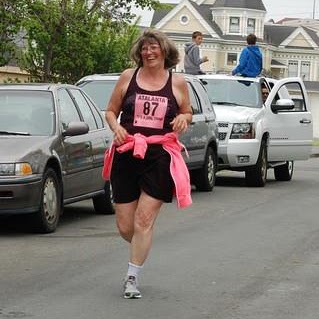
Nancy Burns
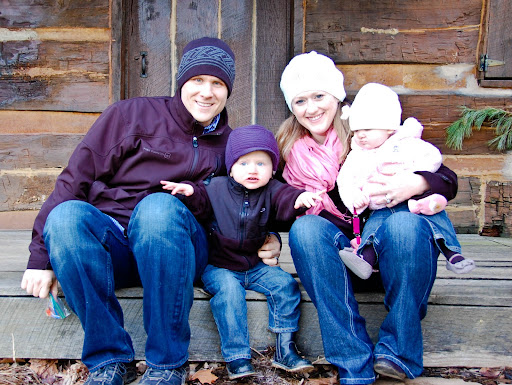
Nancy Burns

Nancy Burns

Nancy Burns

Nancy Burns

Nancy Burns
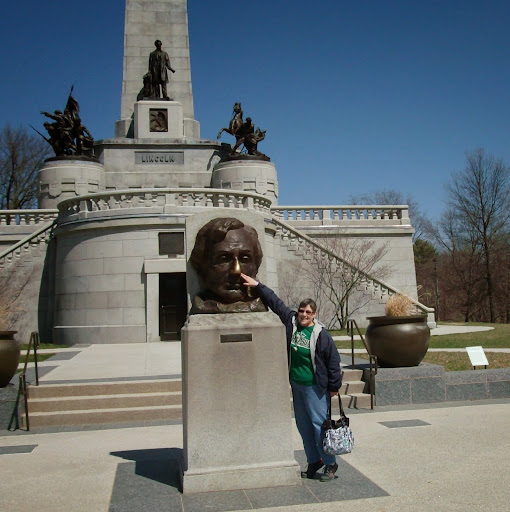
Nancy Burns

Nancy Burns
Flickr
Plaxo

Nancy Burns
view sourceAustin, TXMy life is centered around my family - My wonderful husband, Brad, to whom I have been married 30+ years, my four children: Christopher, Elise, Stuart, and... My life is centered around my family - My wonderful husband, Brad, to whom I have been married 30+ years, my four children: Christopher, Elise, Stuart, and Parker, my daughter- & son-in-law Daniela and Taylor and my two grandchildren: Ella & Nikolas. Last but not least, there is Schatze, my border...

Nancy Burns
view source6146 Camino Verde Dr Ste P

Nancy Burns
view sourceRetired in 2003 after 22 years as a Certified Medical Assistant. I was born in Indiana but move to Oregon in 1973. I consider Oregon my home. It's a... Retired in 2003 after 22 years as a Certified Medical Assistant. I was born in Indiana but move to Oregon in 1973. I consider Oregon my home. It's a beautiful place.

Nancy Burns
view sourceNancy Burns Design
Classmates
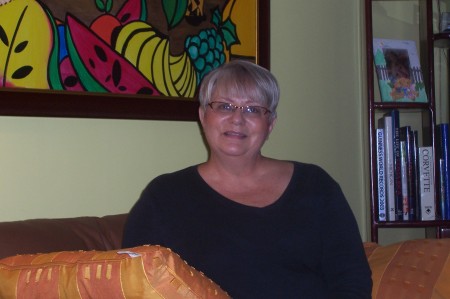
Nancy Carter (Burns)
view sourceSchools:
Lafayette School Benton Harbor MI 1961-1965, Benton Harbor High School Benton Harbor MI 1966-1969
Community:
Jeffrey Elliott, Talitha Johnson, Barbara Epps
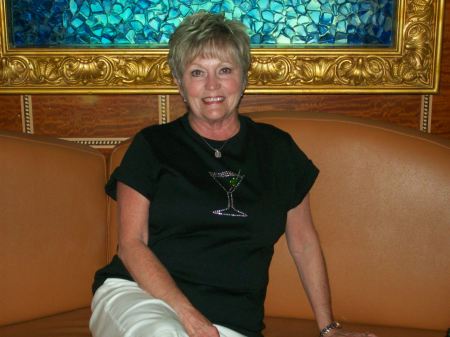
Nancy Hall (Burns)
view sourceSchools:
Polytechnic High School Ft. Worth TX 1962-1966
Community:
George Fields, Zol Singleton, Garry Smith
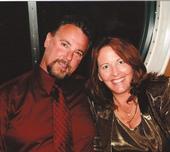
Nancy Juker (Burns)
view sourceSchools:
Palms Junior High School Los Angeles CA 1969-1972
Community:
Paul Czerner

Nancy Schaefer (Burns)
view sourceSchools:
Marywood Academy Grand Rapids MI 1968-1972
Community:
Beth Grady, Brenda Benson, Elaine Hoogeboom, Maureen Prys, Bill Weronko, Richard Weber

Nancy Burns
view sourceSchools:
Harding Elementary School Lebanon PA 1961-1963
Community:
Mike Wilhite, Robert Campbell

Nancy Burns (Flowers)
view sourceSchools:
Wyoming High School Wyoming OH 1967-1971
Community:
Bob Horn, John Waferling, Douglas Payne, Nicole Collett

Nancy Burns
view sourceSchools:
Har-Brack High School Natrona Heights PA 1954-1958
Community:
Antonia Gibson, G Ogle, Greg Bittinger

Nancy Burns (Purpura)
view sourceSchools:
Regina High School South Euclid OH 1978-1982
Community:
Evelyn Gray
Youtube
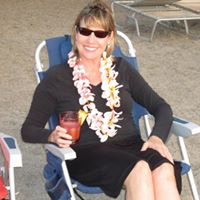
Nancy Crowson Burns
view source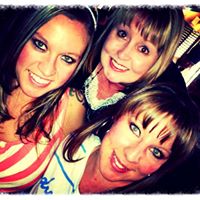
Nancy Burns Johns
view source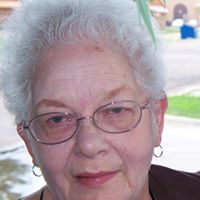
Nancy Elliott Burns
view source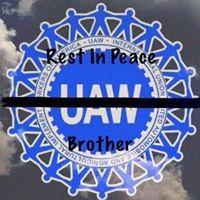
Nancy Burns Spiteri
view source
Nancy Booras Burns
view source
Nancy Burris Burns
view source
Nancy Burns Ravan
view source
Nancy Burns
view sourceGet Report for Nancy L Burns from Austin, TX, age ~64
















